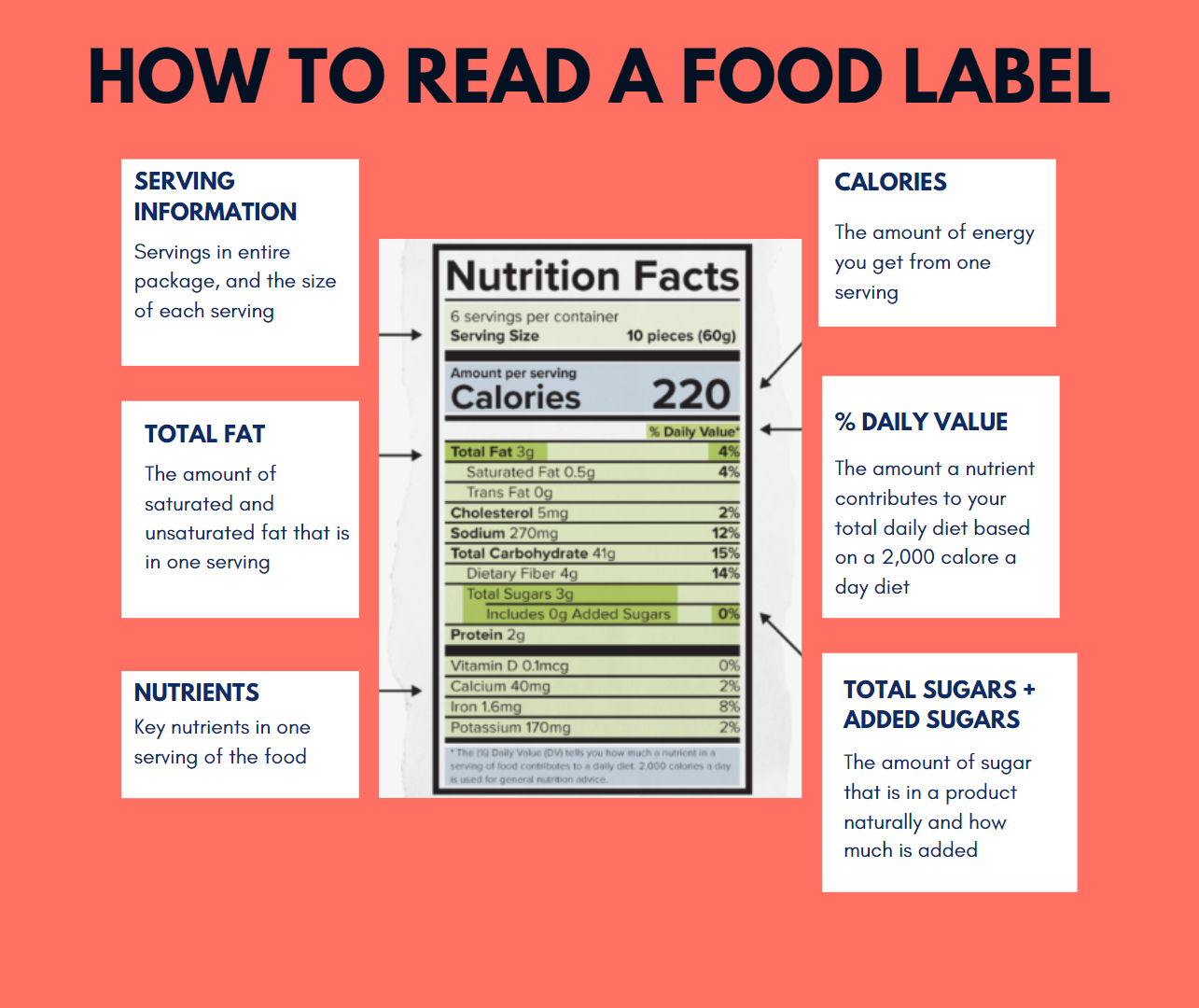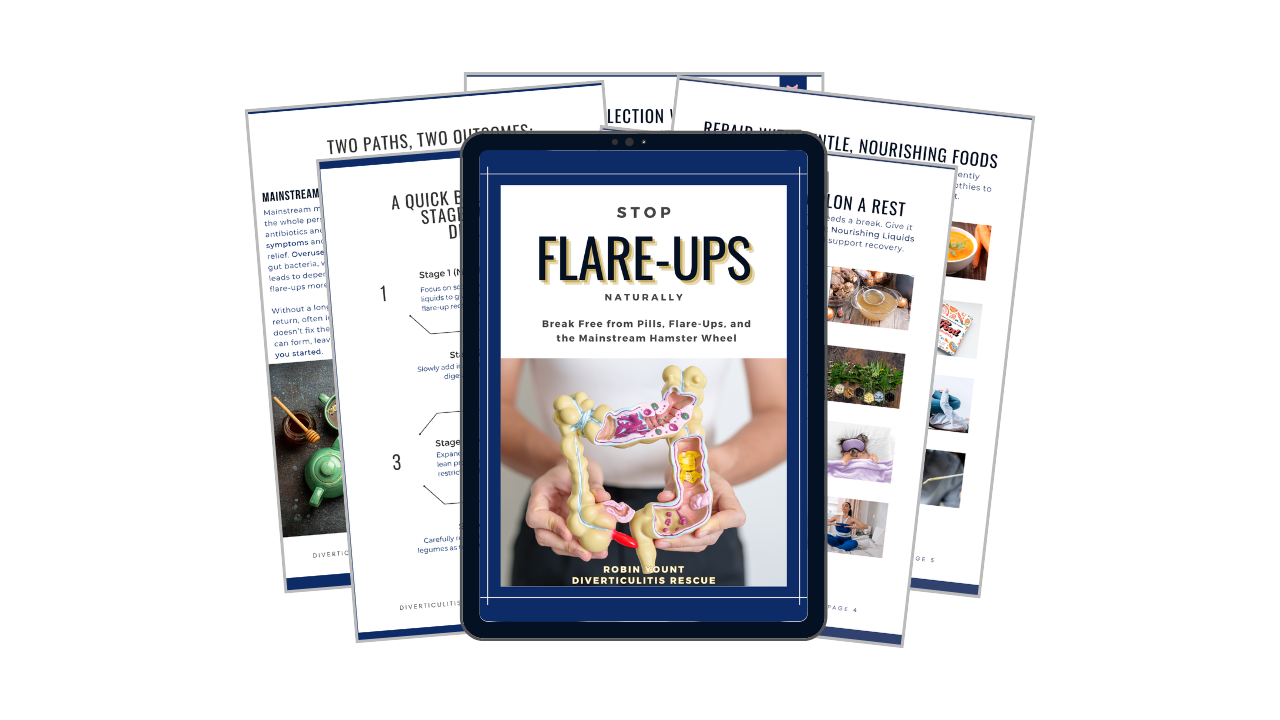Understanding Nutrition Labels: Essential for Managing Diverticulitis and Promoting Gut Health
Sep 14, 2023
Nutrition labels provide important information to help consumers make informed, healthy food choices. Knowing how to read and understand the different sections of a food nutrition label is a valuable skill for overall health, especially for individuals managing diverticulitis and promoting optimal gut health. By being aware of the nutritional content and potential triggers, individuals with diverticulitis can make more informed decisions about their diet, reducing the risk of flare-ups and supporting their digestive system.
Let's Analyze This Nutrition Label And Break It Down Together
Serving Size
- Located at top, indicates servings per container and serving size amount (cups, grams, etc.)
- Shows calories and nutrient information per serving
- If you eat more than one serving, you need to multiply nutrition info
Calories
- Total calories per serving
- Based on a 2,000 calorie general diet
Total Fat/Nutrients
- Shows amounts of important nutrients like fat, sodium, carbs, protein
- Fat content includes total fat as well as breakdowns for saturated fat and trans fat
- Try to choose foods lower in saturated fat and trans fat to promote heart and gut health
Sugar
- Difference between total and added sugars
- Lists sources of added sugars.
% Daily Value
- % Daily Value (%DV) shows how much a nutrient in a serving of food contributes to your total daily recommended amount for that nutrient.
- %DVs are based on a 2,000 calorie general diet and recommended daily intakes for key nutrients.
- The higher the %DV, the more that particular food contributes to meeting your daily nutrient needs.
- For nutrients you want to limit like fat, sodium and added sugars - look for lower %DV.
- For beneficial nutrients like fiber, vitamins, minerals - look for higher %DV.
- 5% DV or less is considered low, 20% DV or more is high.
- Aim for foods with higher %DV for nutrients you want more of and lower %DV for nutrients you need less of.
- Compare %DVs on labels to help identify healthier options.
Key Tips for Reading Nutrition Labels:
- Check serving size and servings per container - pay attention to the serving size all nutrition info is based on
- Review calories per serving - consider your total daily caloric needs
- Look at key nutrients like fat, sodium, fiber - aim for less saturated fat and sodium, more fiber
- Compare % Daily Values - try to choose foods with higher %DVs for nutrients you want more of
- Note ingredients list order - main ingredients are listed first
- Focus on limits for added sugars
- Check claims on front - understand what health claims like "low fat" really mean
- Compare similar products - use labels to choose healthier options
- Consider your nutrition needs - pick foods providing nutrients you want more of
How Reading Labels Benefits Gut Health:
- Identifies foods high in fiber - fiber nourishes good gut bacteria and promotes regularity. (Be mindful of what stage you are in)
- Avoids foods with too much fat or added sugars - these can aggravate gut issues. Look for low saturated fat and minimal added sugars.
- Allows you to check for problem ingredients - like FODMAPs or common allergens. Read ingredients lists carefully.
- Helps identify probiotic foods - yogurt, kefir, and fermented foods contain probiotics for gut health. Check labels for live active cultures.
- Controls portions of high-fat/sugary foods - the serving size indicates how much of these foods may irritate your gut.
- Compares sodium content - some find high sodium foods worsen gut issues. Opt for lower sodium options.
- Ensures you get nutrients your gut needs - like protein, magnesium, zinc. Pick foods with higher %DV of key nutrients.
Total Sugar vs Added Sugar: What's the Difference?

When looking at the sugar content in foods and drinks, it's important to understand the difference between total and added sugars. Total sugars include both naturally occurring sugars found in foods like fruit and milk as well as any sugars added during processing and preparation.
The nutrition label does not provide a daily recommended value for total sugars. However, health experts advise limiting added sugar intake. Added sugars refer specifically to sugars that are added to foods or drinks during manufacturing, cooking at home, or when consuming. Common sources of added sugars include table sugar (sucrose), high fructose corn syrup, syrups (maple, pancake syrup, agave nectar), honey, fruit juices, and many more!
When aiming to reduce sugar in your diet, focus primarily on limiting added sugars rather than naturally occurring sugars from whole foods like fruits and dairy. Check the added sugars line for how much has been added during processing and preparation. Keeping added sugars low can benefit gut health and overall nutrition.
Now that we've covered sources of added sugar, you're probably asking: how does all this sugar affect my gut?
- Added sugars are digested quickly and can cause blood sugar spikes and crashes, which stresses the gut.
- Large amounts of added sugars can feed unhealthy gut bacteria, causing an imbalance and overgrowth. This damages gut lining.
- Added sugars create inflammation, which exacerbates gut conditions like IBS, IBD, and leaky gut.
- Fructose, a type of added sugar, is difficult for the gut to absorb properly in large amounts. This can lead to bloating, gas, and diarrhea.
- Added sugars enhance visceral fat storage, which is located around organs and internal around the gut. This visceral fat increases inflammation.
- Limiting added sugars supports a healthy gut microbiome by preventing blood sugar fluctuations and bacterial overgrowth. It also decreases inflammation.
Ready to take control of your diverticulitis and support your gut health? Start by mastering the art of reading nutrition labels! Discover how to make informed food choices that can help prevent flare-ups and promote a healthy digestive system. Join our community at Diverticulitis Rescue and gain access to expert tips, personalized coaching programs, and exclusive courses designed to empower you on your journey to better health. Don't wait another day – take the first step towards a healthier you! Click here to learn more and get started today.
Stay Connected with My Newsletter
YOUR SOURCE FOR DIVERTICULITIS SUPPORT & INSPIRATION
Dive into Resilient Roads: Tales of Health and Healing, the Diverticulitis Rescue newsletter. Each edition delivers personal stories, natural strategies, and practical tips to help you find balance, relief, and strength on your journey.
Sign up with your email to stay connected, gain exclusive insights, and access resources designed to support your gut health and overall well-being.
We hate SPAM. We will never sell your information, for any reason.



